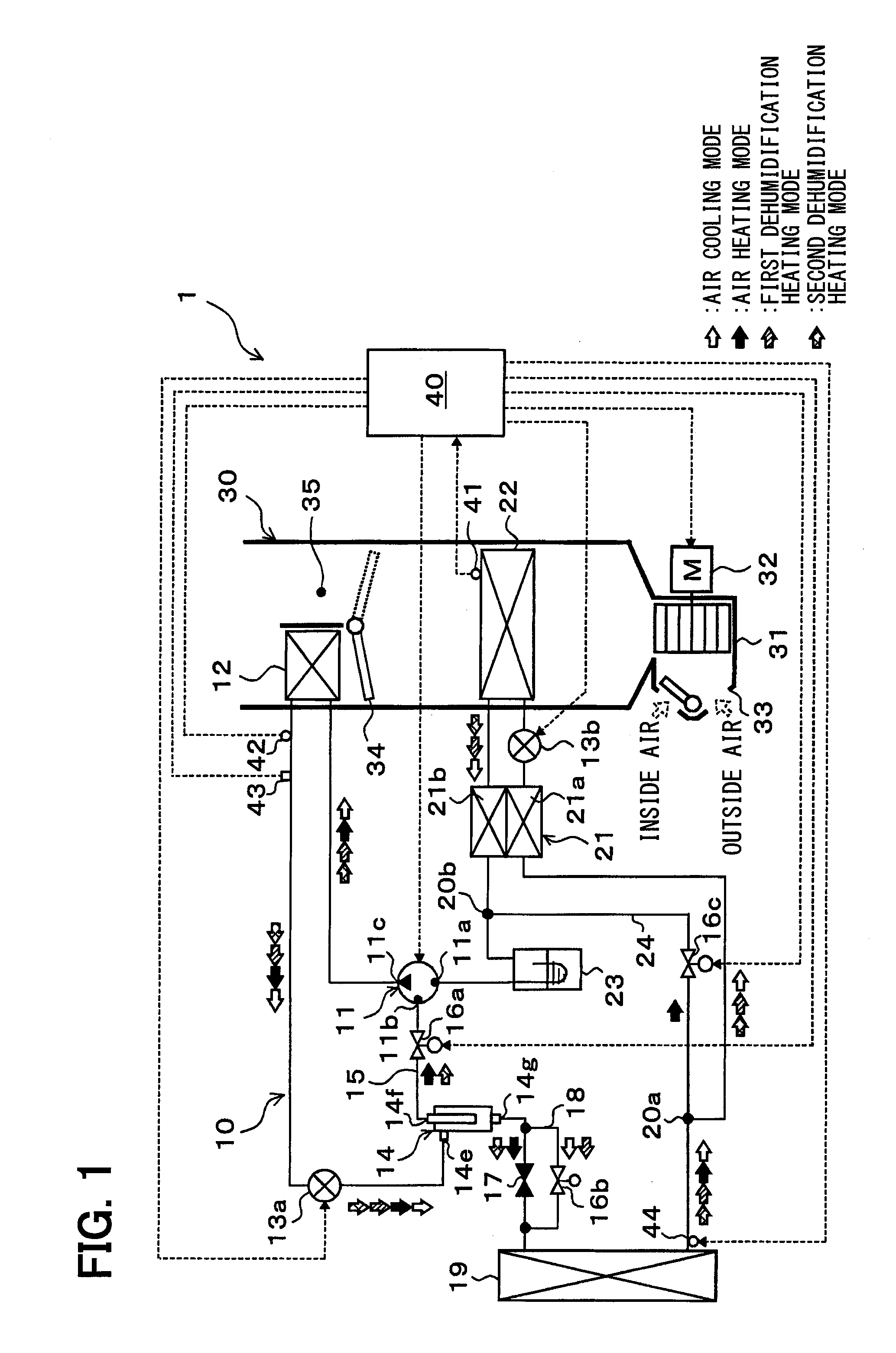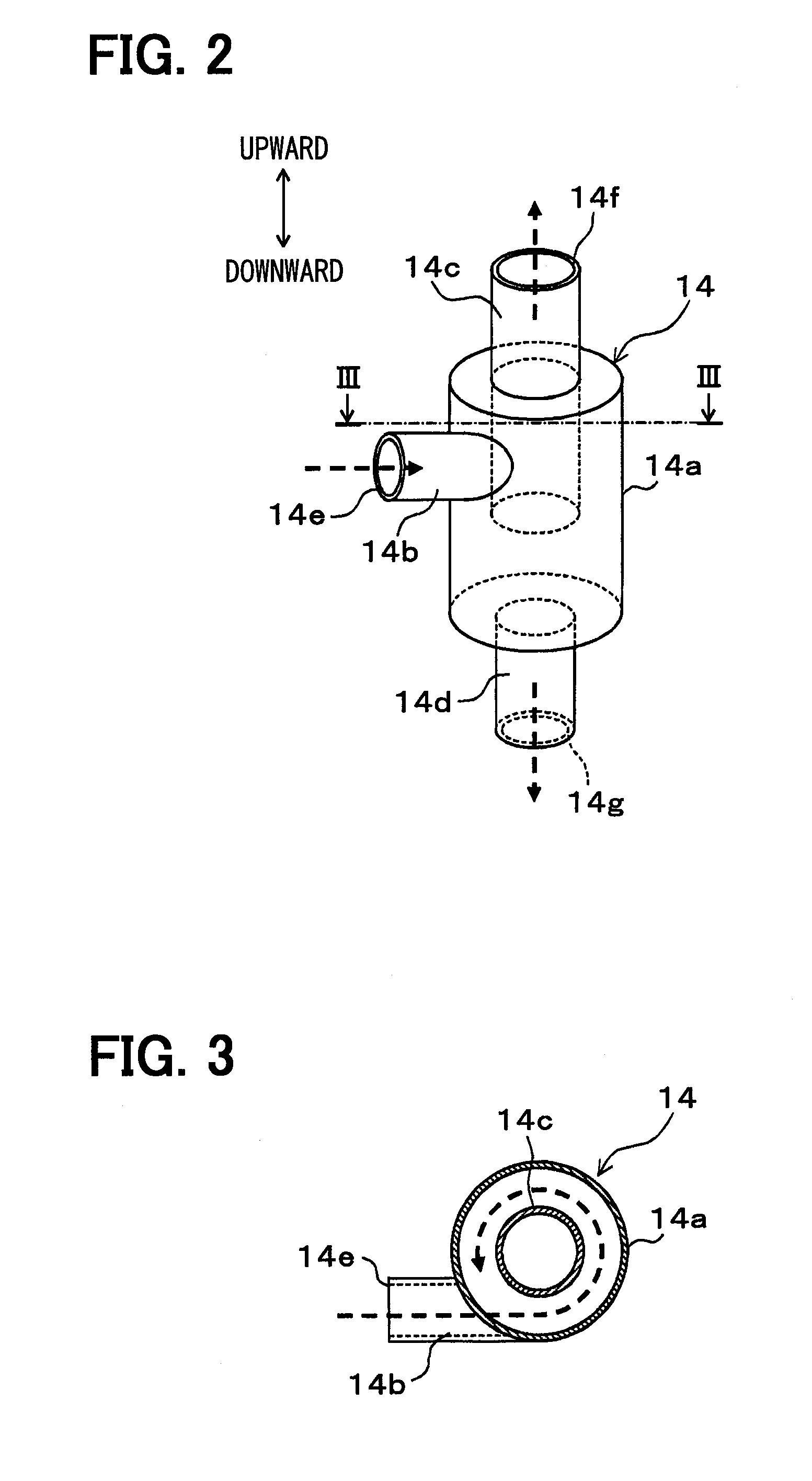Refrigeration cycle device
a cycle device and refrigerant technology, applied in the field of refrigeration cycle devices, can solve the problem that the ventilation air cannot be sufficiently heated by the interior condenser, and achieve the effect of suppressing an increase in pressure loss, improving the cycle coefficient of performance, and preventing the dryness of the refrigerant flowing out of the exterior heat exchanger
- Summary
- Abstract
- Description
- Claims
- Application Information
AI Technical Summary
Benefits of technology
Problems solved by technology
Method used
Image
Examples
first embodiment
[0030]A first embodiment of the present disclosure will be described below with reference to FIGS. 1 to 7. In this embodiment, a refrigeration cycle device 10 is applied to a vehicle air conditioner 1 for a hybrid vehicle that can obtain the driving force for traveling from both the engine, or the internal combustion engine and an electric motor for traveling. The refrigeration cycle device 10 serves to cool or heat ventilation air to be blown into the vehicle interior as a space to be air-conditioned in the vehicle air conditioner 1.
[0031]The refrigeration cycle device 10 of this embodiment can be configured to switch among a refrigerant circuit for an air cooling mode of air-cooling of the vehicle interior by cooling the ventilation air, a refrigerant circuit for an air heating mode of air-heating of the vehicle interior by heating the ventilation air, and refrigerant circuits for first and second dehumidification heating modes of both air-heating and dehumidification of the vehic...
second embodiment
[0188]This embodiment will describe an example in which the structure of the refrigeration cycle device in the first embodiment is changed to that of a refrigeration cycle device 10a, as illustrated in the entire configuration diagram of FIG. 8.
[0189]Specifically, the refrigeration cycle device 10a of this embodiment employs, as the compressor 51, a single-stage boost electric compressor that rotatably drives a fixed displacement compression mechanism by the electric motor to compress the refrigerant drawn from a suction port 51a, to discharge the compressed refrigerant from a discharge port 51c. The number of revolutions (refrigerant discharge capacity) of the compressor 51 is controlled by a control signal output from the air conditioning controller 40 in the same way as that of the compressor 11 in the first embodiment.
[0190]The gas-phase refrigerant passage 15 of this embodiment connects the gas-phase refrigerant outlet 14f of the gas-liquid separator 14 to the side of the sucti...
third embodiment
[0220]This embodiment will describe an example in which the structure of the refrigeration cycle device 10 in the first embodiment is changed to that of a refrigeration cycle device 10b, as illustrated in the entire configuration diagrams of FIG. 9.
[0221]Specifically, the refrigeration cycle device 10b of this embodiment abolishes the gas-phase refrigerant passage 15, the gas-phase refrigerant passage opening / closing valve 16a, and the intermediate fixed throttle 17 from the refrigeration cycle device 10a of the second embodiment. Further, in this embodiment, the gas-phase refrigerant outlet 14f of the gas-liquid separator 14 is closed. The structures of other components in the third embodiment are the same as those in the first embodiment.
[0222]Next, the operation of the above-mentioned structure according to this embodiment will be described below. The basic operation of the vehicle air conditioner 1 in this embodiment is substantially the same as that in the first embodiment. The...
PUM
 Login to View More
Login to View More Abstract
Description
Claims
Application Information
 Login to View More
Login to View More - R&D
- Intellectual Property
- Life Sciences
- Materials
- Tech Scout
- Unparalleled Data Quality
- Higher Quality Content
- 60% Fewer Hallucinations
Browse by: Latest US Patents, China's latest patents, Technical Efficacy Thesaurus, Application Domain, Technology Topic, Popular Technical Reports.
© 2025 PatSnap. All rights reserved.Legal|Privacy policy|Modern Slavery Act Transparency Statement|Sitemap|About US| Contact US: help@patsnap.com



